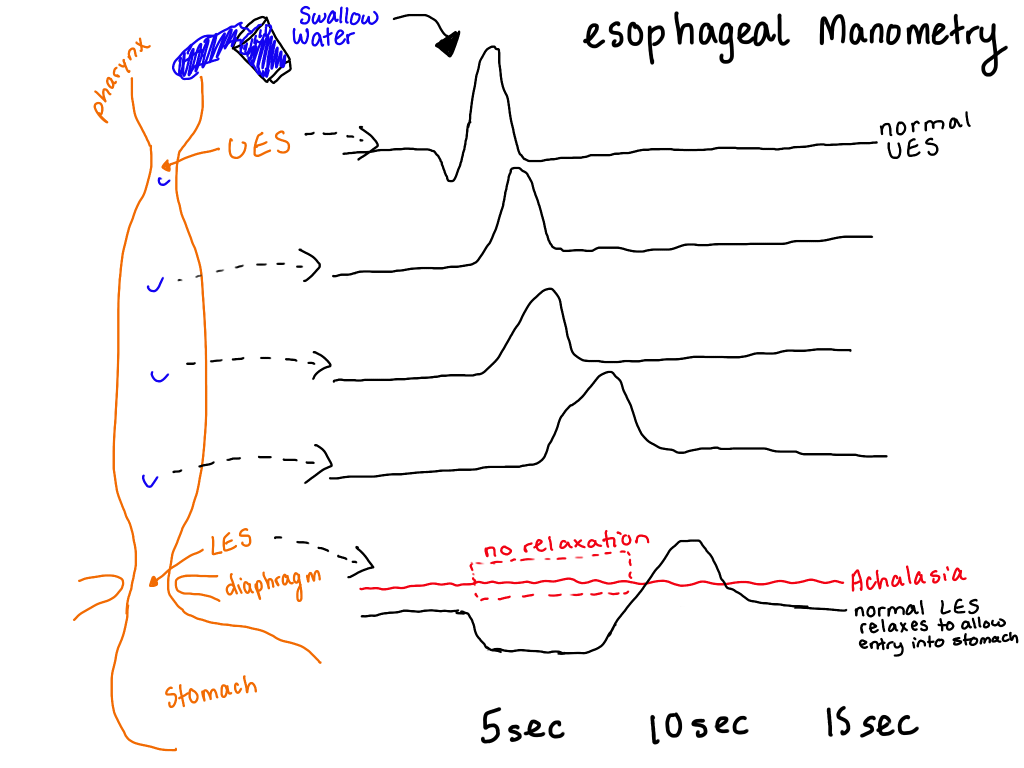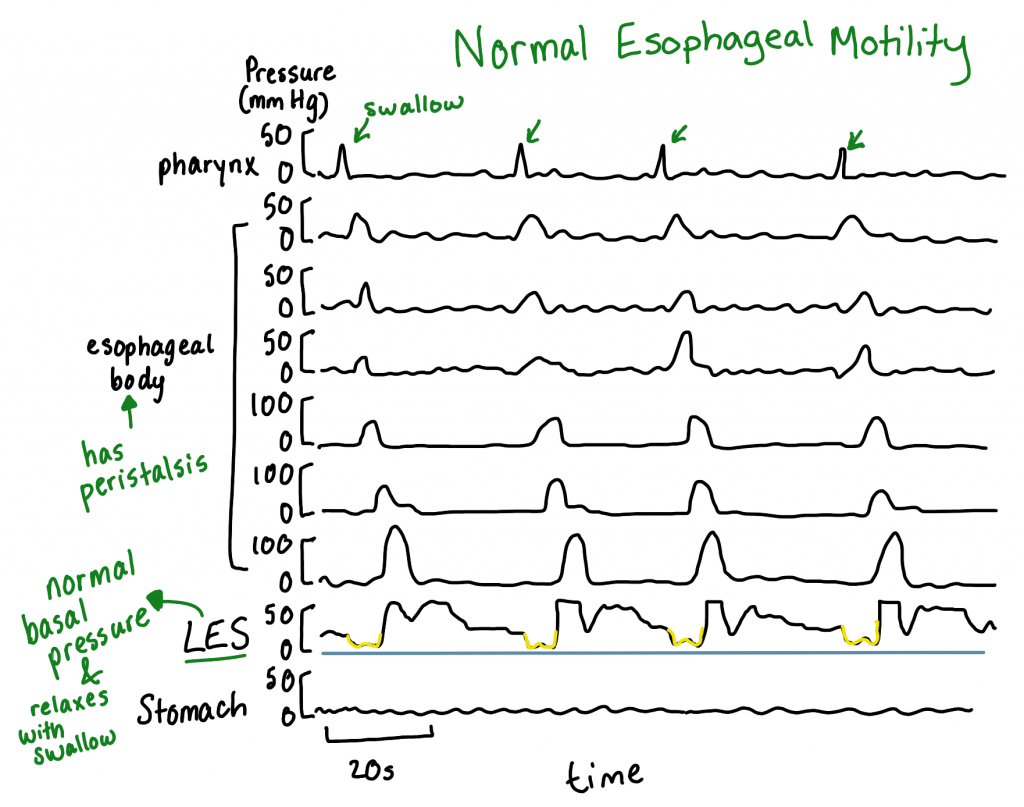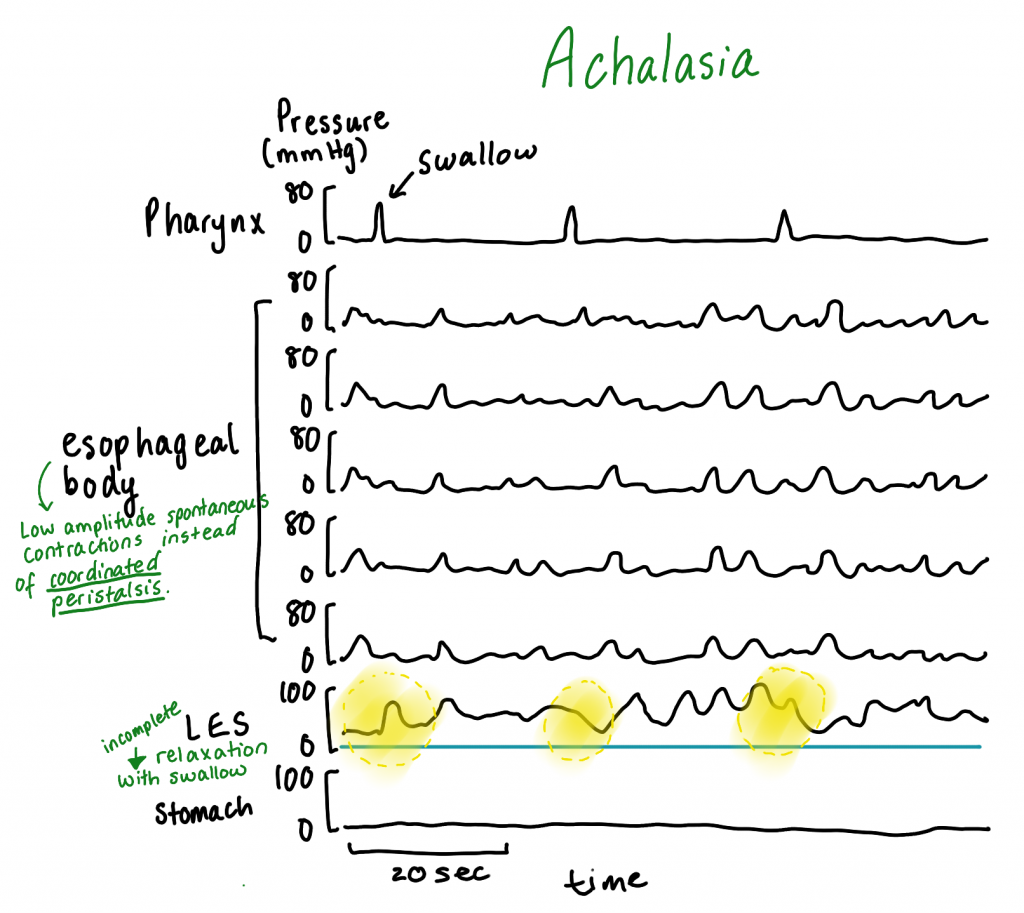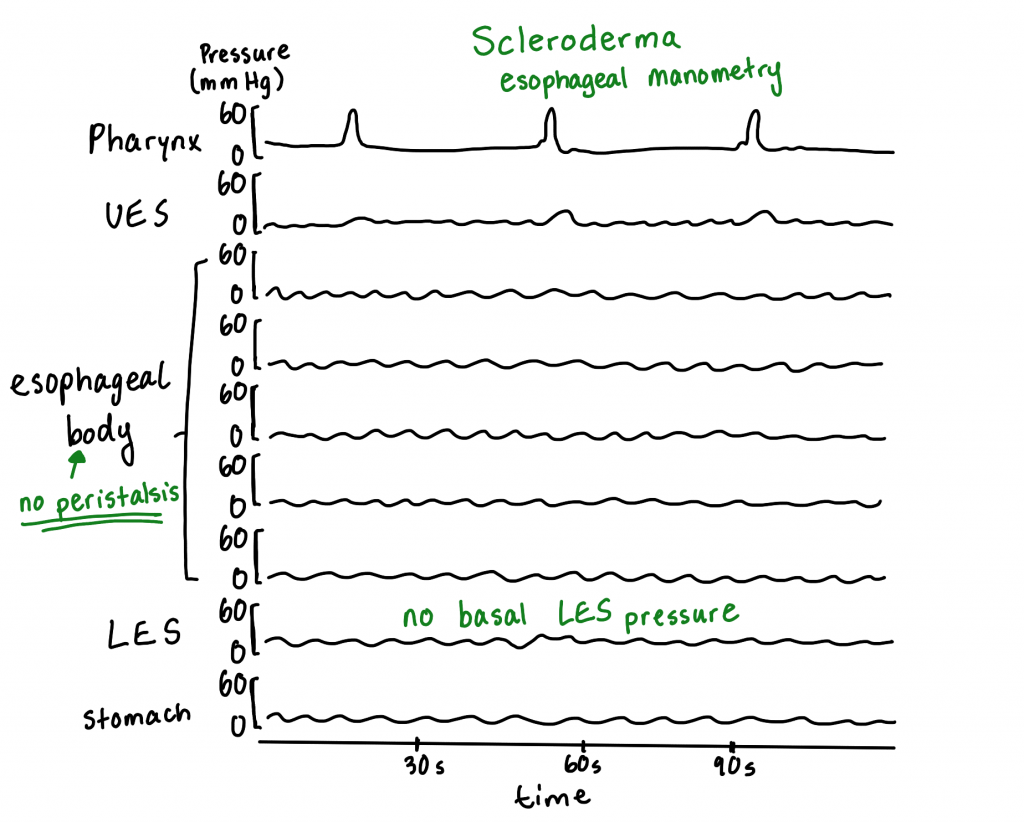Manometry

Esophageal manometry is the most accurate test for esophageal motility disorders. After swallowing water, the pressure in the pharynx, upper esophageal sphincter (UES), esophageal body, lower esophageal sphincter (LES) and stomach is measured.

When esophageal motility is normal, we expect to see peristaltic contractions in the esophageal body that correspond to the movement of the water downwards. We also expect to see the lower esophageal sphincter (LES) relax as the fluid reaches it, allowing for it to pass into the stomach. After this the LES should contract (rising pressure).

With achalasia, we expect to see uncoordinated low amplitude spontaneous contractions in the esophageal body instead of the normal coordinated peristalsis. In other words, look for the absence of peristalsis. In the lower esophageal sphincter (LES), we expect to see the incomplete or absent relaxation resulting in the difficulty swallowing (dysphagia) that patients report. Also note that the pressures in the esophaeal body are higher than the stomach, because the fluid/food backs up into the esophagus. With barium swallow we would see this as esophageal body dilatation.

With scleroderma, we would expect to see absence of peristalsis as well as generally low pressure in the eosphageal body. We would also notice a lack of basal pressure in the lower eosphageal sphincter (LES).